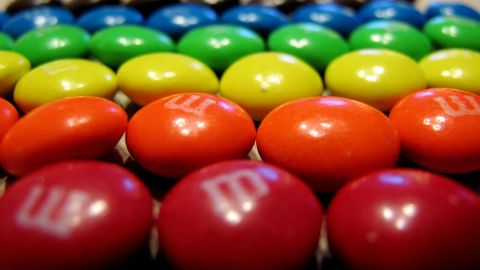Thinking Can Enhance Self-Control—in Eating and Elsewhere

In December 2014, a series of provocative studies appeared in Science. The finding is still shocking today: imagine eating a food, over and over and over, and you will eat less of it when you are actually given the opportunity to do so. At first glance, it seems completely counterintuitive. Don’t we get hungry when we watch The Food Network or read delicious descriptions in cookbooks, magazines, or novels? Doesn’t thinking about eating make us hungrier to eat? Yes. Absolutely. But these studies come with a twist, and that twist is repetition. Mind-numbing, frequent repetition, plain and simple.
It’s not enough to visualize. You have to do it over and over.
Here’s the idea. If you see a food once, say on a favorite show, and think about its deliciousness, you will in fact consume more of it if someone places it in front of you. Ditto reading about it, hearing about it, smelling it, or anything else. If it whets your appetite, you’re in trouble—just like the kids in the famous marshmallow study who found it much more difficult to resist a marshmallow that was directly in front of them than one that was further removed. Hot, appetitive stimuli are called appetitive for a reason. They make us hungry.
But what if you keep thinking about it, visualizing it, imagining yourself eating it, over and over, and then once more even when you no longer want to? What if you repeat it in your head, long after the initial stimulus, whatever it might have been, has long since disappeared? That is where the benefit can come in. And it comes in the guise of habituation.
When we habituate to something, our physical and psychological response becomes so used to it that whatever the “it” is stops being arousing. For example, staying in the realm of food, if I were to give you a big bag of candy from Halloween, and you fished out all of your favorites, you would enjoy the first one more than the second, which you’d enjoy in turn more than the third, and so on, until you’d finally turn away from the pile altogether. You’ve become habituated to the candy.
But habituation need not occur with actual consumption. In fact, mental imagery is often used to habituate people to a given stimulus absent the stimulus in the real world. It’s a technique that has been used often in cognitive-behavioral therapy. And it is precisely that insight which the researchers appropriated in their studies: What happens if we expose ourselves to yummy thoughts not just once, but over and over, as if we were in fact consuming those Halloween candies? Would the effect be the same?
Visualization can have the same habituating effect as consumption
Yes, as it turns out, it would be. In the first study, participants imagined performing a repetitive action 33 times: either inserting 33 quarters into a laundry machine (the control condition) or eating 30 M&Ms and inserting 3 quarters into a machine (the test condition; in an intermediate condition, subjects visualized inserting 30 quarters and eating 3 M&Ms). They were then allowed to eat as much as they wanted from a bowl of M&Ms, in preparation for what they thought would be a taste test. Later, experimenters measured the amount of M&Ms each participant had consumed. They found that those who had imagined eating 30 M&Ms ate significantly fewer than those who’d imagined eating only 3 or none at all. Imagining only 3 M&Ms was too little—it had the same effect as not thinking of them at all. And that is the analogue to the one-time food exposure that we tend to experience when watching TV or walking past a bakery. But 30? That made a difference.
You have to imagine the actual action, not just the principle…
In a follow-up study, the researchers tested if priming (or simple exposure) would be enough, or if actually imagining the process of consumption was necessary for habituation. They had participants either imagine eating 3 or 30 M&Ms, as in the prior experiment, or imagine putting those M&Ms into a bowl.
As it turns out, what you’re imaging plays a major role. Those who’d pictured eating the 30 M&Ms ate significantly less than others—while those who pictured placing those 30 M&Ms into a bowl actually ate significantly more than any other group. What you imagine, specifically, plays a major role. You can’t just think about food, even if you think about it over and over; that will have the opposite of the intended effect. You have to think about actually consuming the food. And repeat that thought.
…And you have to imagine the specific situation, not just a general one
And, you have to think about the very food that you want to avoid overeating. It won’t work if you’re thinking about M&Ms but are then offered, say, ice cream. You will eat just as much ice cream as ever – and may even eat more. A further study showed that there was no cross-habituation in the visualization exercise: when participants imagined eating the 3 or 30 M&Ms but were then given cheddar cheese, they ate just as much cheese in the 30 M&M condition as if they had only imagined 3. But if they thought about eating cubes of cheese? The effect was the same as it had been before.
Exercise care in your imagery
What that means for the ability to exercise self-control may be counterintuitive but is real. Thinking about eating is a good thing—if you think about it repetitively and often enough, and imagine the proper food that you would want to moderate your intake of. And the benefits go far beyond eating. If we have such ability to exercise top-down control—even if we don’t believe it will make a difference (the researchers tested that scenario, too)—we can avoid other harmful scenarios by habituating ourselves to them mentally, that is, without needing to engage in them in the first place. Smoking, drinking, drug use—the technique may work for such behaviors as well.
Just be careful: visualize precisely what it is you want to become habituated to, including the actions involved, and do it many times over. Then, you may find that when that holiday dinner rolls around, you’ve already consumed so much of it in your head that you end up consuming less in real life.
If you’d like to receive information on new posts and other updates, follow Maria on Twitter @mkonnikova
[Photo credit: Creative Commons, from Mr. T in DC flickr photostream]





